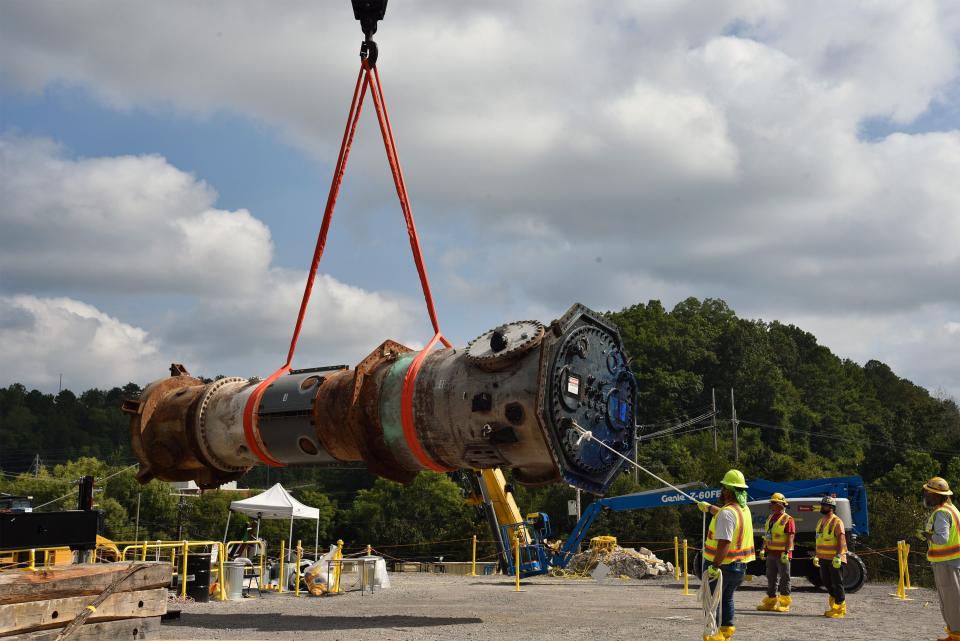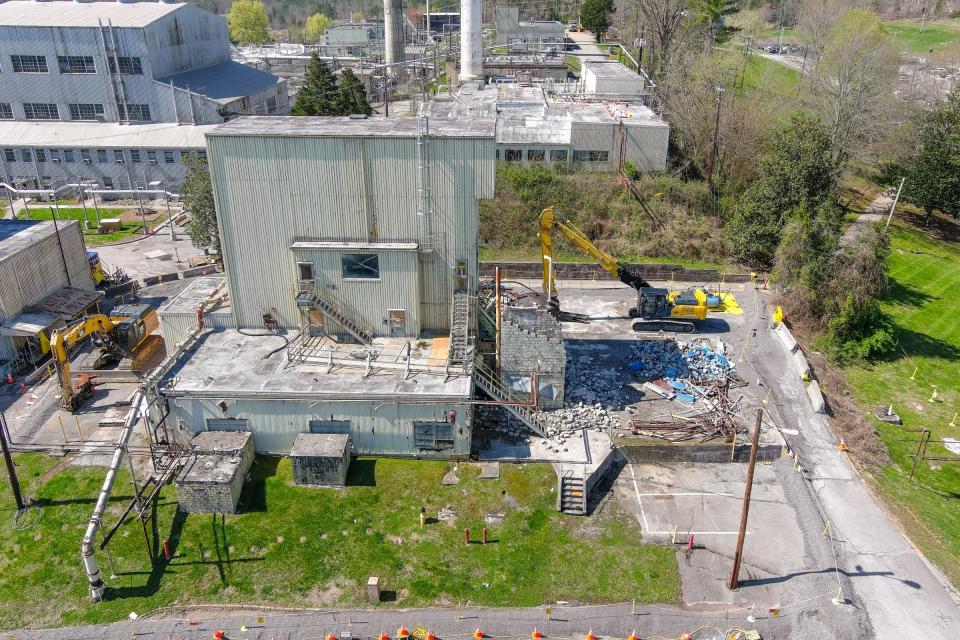1940s-era reactor demolished at Oak Ridge National Laboratory as part of massive cleanup
For the second time in two years, the Oak Ridge Office of Environmental Management, alongside cleanup contractor UCOR, have completed demolition on a decades-old reactor site at Oak Ridge National Laboratory, carefully dismantling a contaminated building at the heart of the lab's bustling central campus.
The Oak Ridge office is a field site of the Department of Energy's Office of Environmental Management, the largest cleanup program in the world, which works to address hazardous nuclear sites left over from the Manhattan Project and the Cold War. Oak Ridge, including the Y-12 National Security Complex and the East Tennessee Technology Park, is among the office's largest cleanup sites.
The demolition of the three-story Low Intensity Test Reactor, which was built in 1949 and operational until 1968, began in March as crews removed the outer walls and roof of what was known as Building 3005. Then came the process of removing cement and shield blocks around the reactor.
Crews then used a crane to lift the 37,600-pound, 30-foot-long reactor into a specialized carbon metal container. It will be safely shipped to a waste site within the next few weeks, UCOR said in a press release.

“Demolishing this structure presented unique challenges,” said Brad Adams, UCOR project manager. “The outer structure had to be demolished in a way that didn’t disturb the reactor. A high-reach crane had to be used on a small footprint without disturbing other ORNL operations. Through hard work, perseverance and ingenuity, we were able to safely bring down both the outer structure and safely pull out and package the reactor.”
The project followed on the heels of the Bulk Shielding Reactor demolition last fall, the first reactor at ORNL's central campus to come down.
Next, the Oak Ridge Research Reactor, known as Building 3042, and support facilities for the Graphite Reactor will be prepared for demolition. The Graphite Reactor, the first reactor in Oak Ridge and only the second nuclear reactor ever built, will remain standing. It has been designated as a National Historic Landmark by the National Park Service since 1965.
The Low Intensity Test Reactor demolition produced more than 1.1 million pounds of waste, and that's from just one of many cleanup projects in Oak Ridge.

The Oak Ridge Office of Environmental Management, or OREM, tore down 500 buildings at the former K-25 site, which included the largest building in the world when it was completed in 1945. It was the world's first removal of a former uranium enrichment complex, and the 13 million square feet of demolished facilities created 1.7 million cubic yards of waste, enough to fill 520 Olympic-size swimming pools.
When the K-25 cleanup was completed in 2020, OREM and UCOR moved crews to ORNL and Y-12, where a series of demolition and construction projects will transform the sites' original footprints and replace deteriorating buildings with state-of-the-art facilities over several decades.
OREM broke ground on a $550 million waste disposal facility in August to support its mission of enabling Department of Energy missions while protecting human health and the environment. The new facility is scheduled for completion in 2029 and will allow OREM to move forward with ambitious demolition projects, especially at the Y-12 site, where workers are preparing a former uranium enrichment building called Alpha-2 for demolition in the spring.
The Low Intensity Test Reactor was a testing and training facility that used highly enriched uranium fuel with water as a coolant. It gained fame in 1951, when a photograph of the blue glow caused by radiation shining through a pool above the reactor landed on the cover of Scientific American.
More than a dozen research reactors were built at ORNL over multiple decades, according to the Department of Energy. OREM has worked or will work to address 16 inactive research reactors and isotope facilities at the lab.
ORNL, managed by UT-Battelle for the DOE's Office of Science, is the nation's largest science and technology lab. Y-12 National Security Complex, managed by Consolidated Nuclear Security for the DOE's National Nuclear Security Administration, is a manufacturing and processing facility that advances global security through nuclear deterrence and naval reactor fuel production.
The demolition of the Low Intensity Test Reactor is another step toward clearing buildings that have served their mission and making room for new missions at both sites.
“This was a complex project, and we’re extremely proud of all the team members who worked together to plan and complete it safely,” said Nathan Felosi, ORNL portfolio federal project director for OREM. “Those efforts showcase EM’s impact by clearing away another high-risk excess contaminated facility and continuing the visual transformation at ORNL.”
Daniel Dassow is a reporting intern focusing on trending and business news. Phone 423-637-0878. Email daniel.dassow@knoxnews.com.
Support strong local journalism by subscribing at knoxnews.com/subscribe.
This article originally appeared on Knoxville News Sentinel: Oak Ridge National Laboratory demolishes Low Intensity Test Reactor

